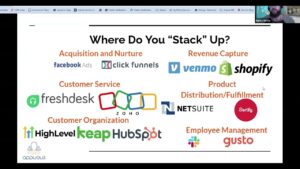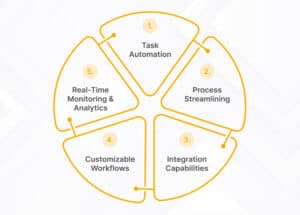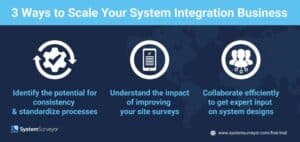Boost Business Efficiency with Automation Benefits
Automation streamlines processes, enhances efficiency, and reduces manual labor, allowing businesses to scale and focus on growth.
Introduction:
As your business grows, managing repetitive tasks and manual processes can become a significant drain on time and resources. This is where automation comes into play. By automating workflows and day-to-day tasks, you can improve productivity, reduce human error, and free up your team to focus on strategic, high-value initiatives. Let’s explore the key benefits of automation and how it can revolutionize your business operations.
What is Business Automation?
Business automation refers to the use of technology to perform recurring tasks or processes with minimal human intervention. Automation tools streamline workflows, enhance efficiency, and improve accuracy, ensuring that time-consuming tasks are completed faster and more effectively.
Key Benefits of Automation:
- Increased Productivity: Automation reduces the time spent on manual tasks, allowing your team to focus on more critical areas of the business.
- Cost Savings: By reducing the need for human involvement in repetitive tasks, automation can lower operational costs.
- Improved Accuracy: Automation minimizes human error, ensuring processes run smoothly and data remains consistent across systems.
Why Automation is Critical for Business Growth
In a competitive business landscape, efficiency is key to staying ahead. Automation allows companies to scale without sacrificing quality or consistency. Whether you’re a small business or a large enterprise, integrating automation into your workflows can lead to significant time savings and operational efficiency.
Examples of Automation Benefits:
- Sales and Marketing Automation: CRM tools like Drip automate lead nurturing, customer segmentation, and email marketing campaigns, ensuring no potential customer falls through the cracks.
- Customer Support Automation: Chatbots and automated ticketing systems help manage customer inquiries more effectively, improving response times and satisfaction.
- Accounting and Finance Automation: Tools like QuickBooks can automate invoicing, payroll, and tax calculations, reducing the burden on your finance team and minimizing errors.
How Automation Drives Operational Efficiency
Automation isn’t just about eliminating repetitive tasks. It also enables smoother communication and collaboration across departments. When integrated into multiple aspects of your business, automation tools can streamline operations, reduce bottlenecks, and ensure that workflows are consistent and reliable.
Practical Uses of Automation in Business:
- Email Marketing: Automate follow-ups, segmentation, and A/B testing with tools like Mailchimp or ConvertKit.
- Task Management: Sync your team’s tasks across platforms like Trello or Asana, reducing manual updates and improving project tracking.
- Order Fulfillment: For ecommerce businesses, automation tools like Katana Cloud Inventory help track inventory and ensure orders are fulfilled on time without manual intervention.
How to Implement Automation in Your Business
Introducing automation into your business doesn’t need to be a complex process. Here are a few steps to get started:
1. Identify Repetitive Tasks
Start by making a list of tasks that are repetitive or time-consuming for your team. These could include things like sending follow-up emails, managing inventory, or scheduling social media posts.
2. Choose the Right Tools
Once you’ve identified tasks that can be automated, research the best tools for the job. For instance, Zapier is a popular choice for automating workflows between apps, while Vendasta is ideal for managing digital services at scale.
3. Monitor and Optimize
After implementing automation, it’s essential to monitor the results and optimize the workflows. Continuously assess how well the automation is working and whether any adjustments are needed.
Common Challenges of Automation
While automation can offer significant benefits, it can also present certain challenges. Here are a few obstacles and how to overcome them:
1. Initial Setup Costs
While automation can lead to long-term savings, the upfront investment in tools and systems can be costly. To mitigate this, start with a few core processes and gradually expand automation as your business grows.
2. Employee Resistance
Some employees may be wary of automation, fearing it will replace their roles. Combat this by emphasizing how automation will enhance their work by allowing them to focus on more valuable tasks.
3. System Integration Issues
Automating multiple systems can sometimes lead to integration challenges. Make sure to choose tools that work seamlessly with your existing software to avoid compatibility issues.
FAQs
What is automation in business?
Automation in business refers to the use of software or technology to perform tasks with minimal human involvement. It’s designed to streamline operations, improve efficiency, and reduce manual errors.
How does automation benefit businesses?
Automation enhances productivity by automating repetitive tasks, reduces operational costs, improves accuracy, and enables faster scaling.
Which tasks are ideal for automation?
Tasks that are repetitive, time-consuming, and prone to human error, such as data entry, lead follow-ups, invoicing, and inventory management, are ideal candidates for automation.
Can automation tools be used in small businesses?
Absolutely. Automation tools can benefit businesses of all sizes by saving time and reducing costs. Many tools, such as Zapier or Trello, offer scalable options suitable for small businesses.
How can I get started with automating my business processes?
Identify the most time-consuming tasks in your business, research automation tools that fit your needs, and gradually implement them. Be sure to monitor the results and make adjustments as needed.
Top Tools to Simplify and Scale Your Business
- Drip – A powerful CRM tool that automates email marketing campaigns, customer segmentation, and lead nurturing.
- QuickBooks – Automates accounting and finance processes, including invoicing, payroll, and expense tracking.
- Katana Cloud Inventory – Automates inventory management for ecommerce businesses, helping track stock levels and streamline order fulfillment.
- Zapier – A workflow automation tool that connects apps to automate tasks across platforms, saving time and reducing manual work.
- Trello – A task management tool that allows teams to automate workflows and track project progress more efficiently.
Keywords: automation benefits, business automation, workflow automation, CRM automation, task management tools, ecommerce automation, finance automation, productivity tools







